
|   |

|   |
 e-mail: leelakaverivenkat@gmail.com Saroha Festival: In memory of Guru Hare Krishna Behera October 4, 2024 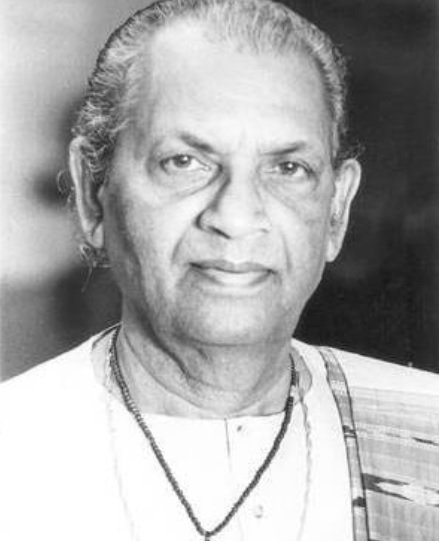 Guru Hare Krishna Behera In keeping with the quiet, non-controversial and modest character of late Odissi Guru Hare Krishna Behera the event was in memory of, was the modest but well-designed Saroha Festival held at the M.L. Bhartia auditorium of Alliance Francaise, New Delhi, on September 4, 2024. Having trained in Gotipua dance, and in Chanda and Champu of Odissi music, Hare Krishna Behera belonging to Balasore in Odisha, had his Odissi dance training under teachers like Guru Kelucharan Mohapatra and Guru Mayadhar Raut, when he was in Kala Vikash Kendra of Cuttack - till he migrated to Delhi in 1964, where after a stint with the Natya Ballet Centre, he joined the Gandharva Vidyalaya as a teacher in 1971. He later ran his own teaching classes at his place in Asiad Village, till he passed away in 2012. Daughter/Odissi dancer Kavita Dwibedi holds the festival of Saroha every year in memory of her father/guru.  Kavita Dwibedi & group Dancers felicitated on the occasion with the Guru Hare Krishna Behera Smriti Samman, were on the whole well chosen. Giving a start to the festival were Kavita's own senior students, turned out in a getup of soothing colours, presenting Shiva Panchakshara with memorable movements portraying Shiva's drinking of halahal, and of Shiva as Daksha Swaroopaya and Digambaraya. A distinct ability for emoting with facial expression was evident in the dancers. The junior wing of her foundation Sanchari, presented Batu to the recorded music of ta ka dha dha kitataka ta ham ham tari, not heard very often these days. 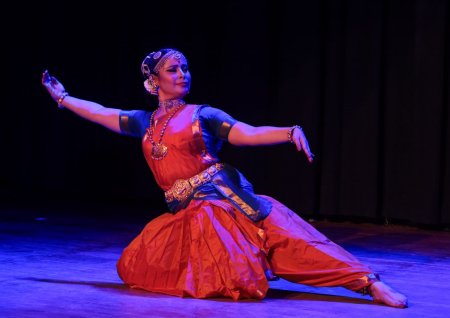 Ayana Mukherjee Outstanding among the dancers selected for the Hare Krishna award on the occasion was Kuchipudi performer Ayana Mukherjee, disciple of Guru Vanashree Rao. Not only was her performance absolutely true to the Kuchipudi idiom, but it contained fresh elements, rarely seen today in this dance form. The explanation lay not just in Ayana's own well trained performance abilities, but in Vanashree Rao's innovative talents, coming to the fore nowadays, more strongly than ever before, in visualizing the dance. Taking a composition of Annamacharya, a known Venkateshwara devotee, who also paid homage to some other close Vaishnavite manifestations like Rama in his oeuvre, like Deva devam bhaje divya pravaham, Ravanasura vairi rana pungavam Ramam set to raga Hindolam, Vanashree's choreography inserted scenes based on passages from other texts, complementing the main message of the song. Showing Rama paying homage to the Devi in her awesome manifestations of 'Rakta Beeja', Durga, while coming to the aid of her bhaktas, Vanashree inserts a passage built round a well-known myth in Bengal - of Rama praying to the Devi before setting off for battle against Ravana - extolling her through her 108 names. Falling short of one flower at the end, he decides to pluck out one of his eyes and offer it instead, and just as he is about to gouge out an eye, the Goddess stops him, blessing him for his forthcoming war against Ravana. On the other side Ravana is shown uttering the great Shiva mantra, praying to his Lord, before venturing on his final battle against Rama - in which he ultimately perishes. The choreographer also deserves praise for suitable music in the Carnatic tradition, for these extra passages. And with an efficient musical team comprising Venkateshwaran (vocal), R. Keshavan providing nattuvangam and mridangam accompaniment, Rajat Prasanna (flute), Raghavendra Prasad (violin), Shyamala on veena, Ayana's involved dance full of both grace and conviction, provided a high point in the festival. 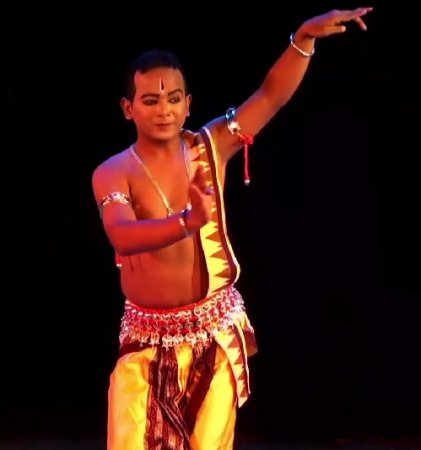 Vishwanath Mangaraj Sharon Lowen's student Vishwanath Mangaraj, son of mardal player Prafulla Mangaraj, is finally getting the deserved attention from event managers. His presentation was based on late Kelucharan Mohapatra's visualization of the ashtapadi, Dheera sameere Yamuna teere vasati vane Vanamali, wherein the sakhi works at persuading Radha to join Krishna, eagerly awaiting her arrival. 'Having lovingly made a bed of flowers on the Jamuna bank, he waits for you anxiously, looking for your tender footsteps even in a falling leaf from the tree'. The line Patati pattatre, vichalta patre sankita bhavadupayanam met with delicate and sensitive treatment from the dancer. Sharon Lowen has not in any way altered her Guru's creation while conveying it faithfully to her students. 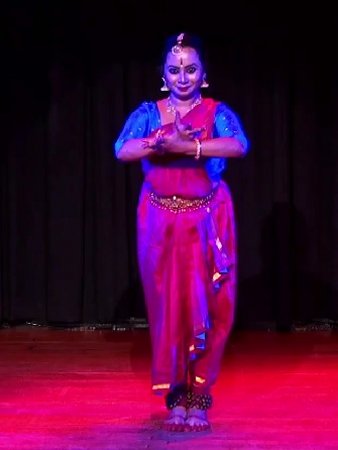 Swarnali Kundu The Bharatanatyam dancer of the festival Swarnali Kundu, who runs her own institution Nada Shishya Parampara, took the stage following an overly hyped introduction of achievements, by the compere. As a student of Rama Vaidyanathan, as mentioned, her performance seemed to reveal very little of the teacher's influence in style, in her starting Devi Stuti in Ragamalika set to adi talam, introduced as choreographed by Rama. Her choice of the ashtapadi Kuruyadu nandana, was I feel, somewhat ambitious. This Jayadeva song wherein Radha, basking in the languorous mood of desire slaked intimacy, demands that Krishna paint her bosom with sandalwood paste, and repair the rumpled, after-love appearance, calls for the kind of uninhibited yet delicate abhinaya, which the best of dancers have found too challenging. 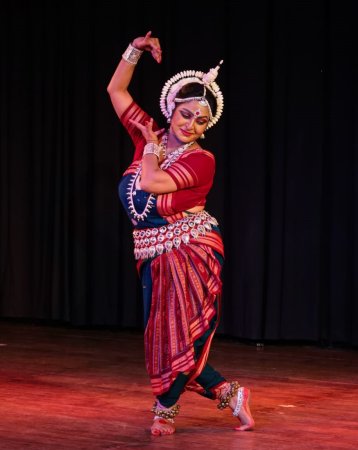 Swapnokalpa Dasgupta Odissi dancer Dr. Swapnokalpa Dasgupta, Head of the Department of Dance in NCPA Mumbai, with a Masters Degree in Arts, having worked at Arts Education, has incorporated in her career both performance and the allied, and in many respects, more challenging side of curating and choreographing. Understandably she decided to present her own creations, while acknowledging her guru's brilliance. Her presentation had contrasts of the light hearted and benign grace counterpointed by awesome attitudes. Speaking highly of her Guru Kelucharan Mohapatra's feel for comic timing, in her own presentation of the joyous (Harshita), with a hint of the Vasaka Sajja followed by the Abhisarika Nayika, there was an underlying current of humour - not very common in Indian dance. The Abhisarika, somewhat immodestly, setting out in search of, and to meet her lover is a suitable subject for some leg-pulling humour - aside from her usual adventures of avoiding a snake, thorns and trying to keep away from being discovered while on this secret journey. This Nayika has been, apart from the Natya Sastra, the subject of Vaishnav padavalis. With a verse selected from Tagore's Bhanu Singher Padavali, the music enhancing the mood was composed and sung by Manoj Desai, with Rohan Dahale on the mardal, Aparna Deodhar on sitar and Vijay Tambe on flute. The next item was in a very different mood of homage to Kali, a version of the Devi, very close to people of Bengal. Using the Kali Tandava text by Adi Shankara, Akhanda mandalaakaaram charachara…. Swapna brought out the twin facets of the Goddess - awesome in her fearful appearance of primordial energy, with blood lust, wild hair and decorated with necklace of severed heads: but contrastingly also the embodiment of truth and wisdom, Mother protector of the Universe and all her bhaktas, supreme bliss and beyond all duality. As a dancer who has won the Bismillah Khan award, Swapna did not disappoint.  Writing on the dance scene for the last forty years, Leela Venkataraman's incisive comments on performances of all dance forms, participation in dance discussions both in India and abroad, and as a regular contributor to Hindu Friday Review, journals like Sruti and Nartanam, makes her voice respected for its balanced critiquing. She is the author of several books like Indian Classical dance: Tradition in Transition, Classical Dance in India and Indian Classical dance: The Renaissance and Beyond. Post your comments Pl provide your name and email id along with your comment. All appropriate comments posted with name and email id in the blog will also be featured in the site. |